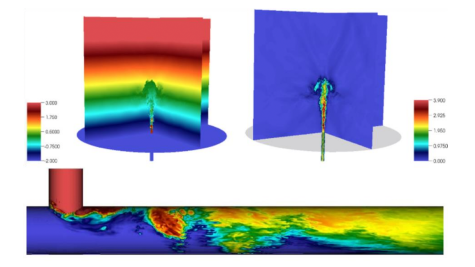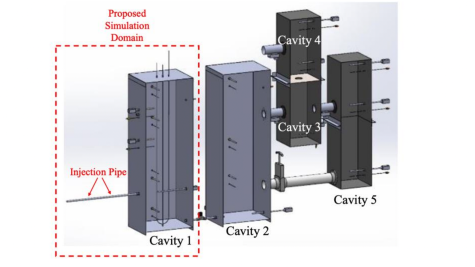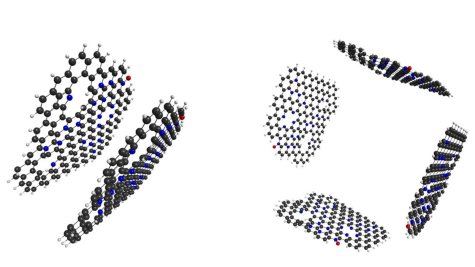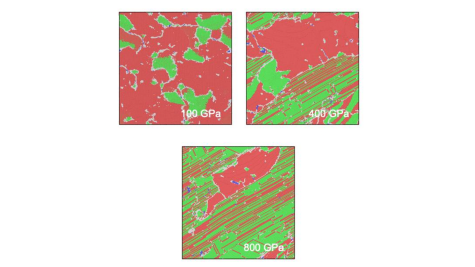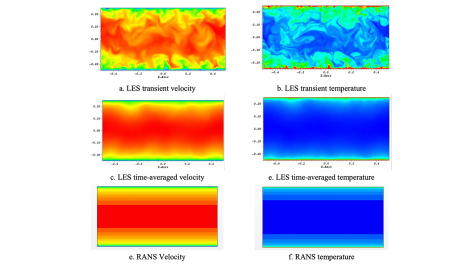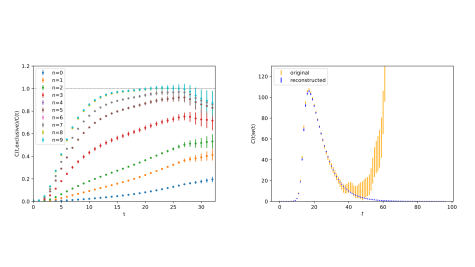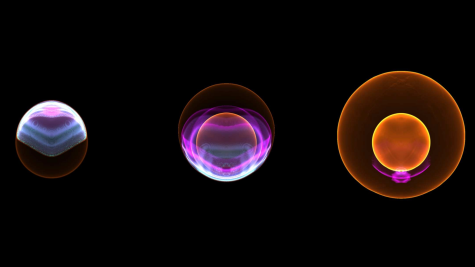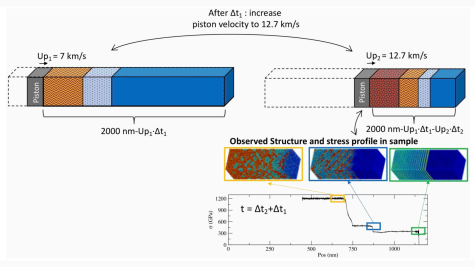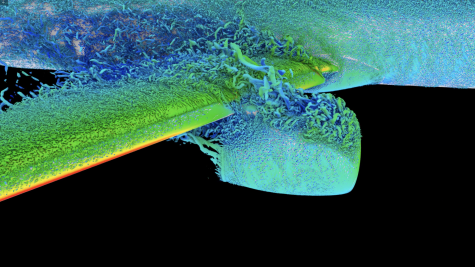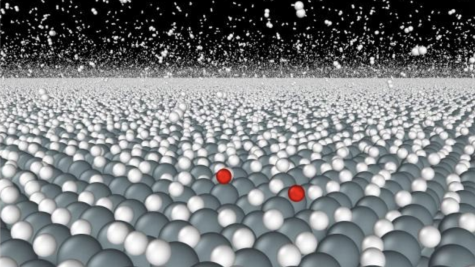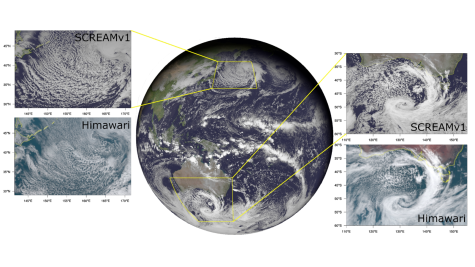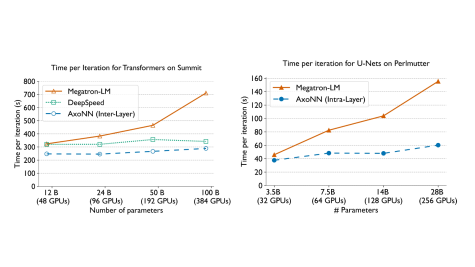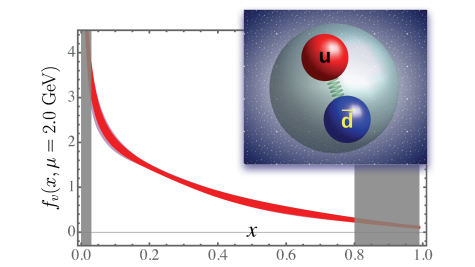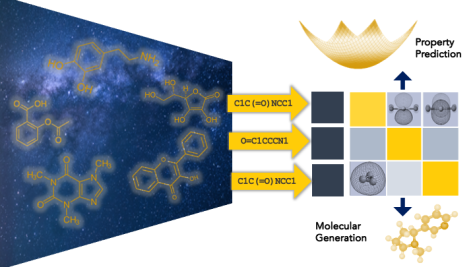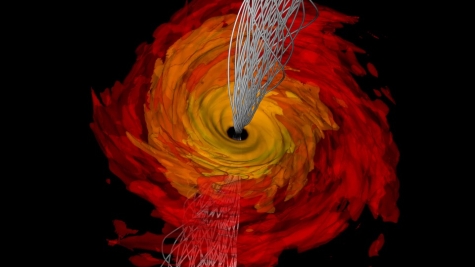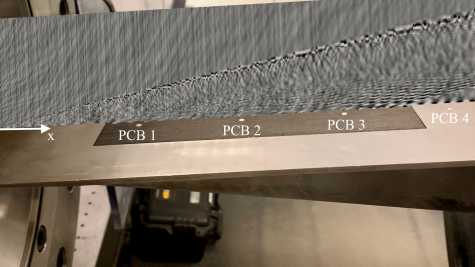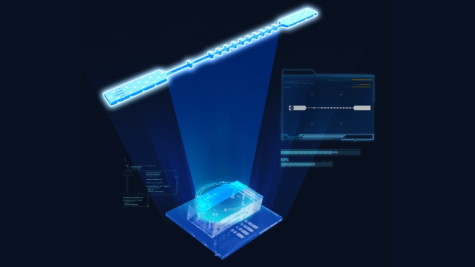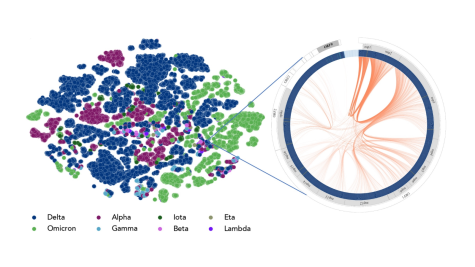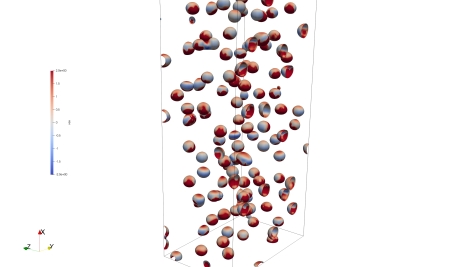ALCF projects cover many scientific disciplines, ranging from biology and physics to materials science and energy technologies. Filter ongoing and past projects by allocation program, scientific domain, and year.
DNS of Buoyancy Driven Flows for Developing NN-informed High-fidelity Turbulence Closures
The enhanced understanding of the physics and the ML-based models developed during this project will help improve design, optimization and safety of advanced nuclear reactors and energy systems.
High-Fidelity Simulations of Helium-Air Mixing in High-Temperature Gas Reactor Cavities
Results from this work will be included in a V&V database for future validation of HTGR simulation codes and could be used to improve the sub-grid scale models in low-order codes.
Highly Scalable Ab Initio Simulations of N-Doped Porous Materials for Carbon Capture
The results from this project will advance the development of carbon capture technologies essential for mitigating greenhouse gas emissions impacts on health, the economy, and the environment.
Machine Learning Enabled Atomistic Simulation of Iron at Extreme Pressure
The simulations in this project will provide a first-ever view into the changes to the microstructure of iron as it goes through phase transformation and extreme deformation, detail at the atomic level directly comparable to the experimental X-ray absorption data and allowing a deep understanding of iron’s behavior under these extraordinary conditions.
High Fidelity Numerical Analysis on Flow and Heat Transfer Behavior in Involute Plate Research Reactor to Support the Conversion Program
The simulations in this project will be performed with both Nek5000 and NekRS expanding their application to the Research Reactor Conversion Program.
Hadronic Contributions to the Muon G-2 from Lattice QCD
To resolve the difference between lattice and data-driven theory values, the project aims to compute the hadronic contributions at the sub-percent level, and ultimately to reach the expected precision of the experiment, at the one-to-two-permille level.
Exascale Models of Astrophysical Thermonuclear Explosions
This project builds upon the success of earlier INCITE awards that explored astrophysical thermonuclear explosions, as the researchers greatly expand their work to model thermonuclear flame propagation across the surface of a neutron star.
Carbon at Extremes: Discovery Science with Exascale Computers
The goals of this INCITE project are to design compressive pathways towards synthesis of elusive and long-sought post-diamond BC8 phase of carbon; uncover kinetics effects in phase transformations to BC8 phase from diamond and amorphous carbon in explicit, billion atom, double-shock simulations at micrometer and nanosecond time scales.
Flight-Scale Simulations of a Transport Aircraft in High-Lift Conditions
A current goal for the aircraft industry is to unambiguously demonstrate consistently accurate predictive computations of high-lift flows. If this objective can be realized, computations may facilitate a simulation-based approach to certification, thereby significantly reducing the cost of bringing a new aircraft to market while continuing to meet strict safety guidelines.
Heterogeneous Reaction Dynamics for Energy Storage and Hydrogen Production
This team will deploy new state-of-the-art machine learning (ML) methods to construct reliable and accurate force fields, trained on accurate quantum electronic structure (DFT) calculations and perform record-scale and -speed MD simulations of battery and catalytic interfaces.
Energy Exascale Earth System Model
This team set out to perform an unprecedented pair of decadal-scale climate simulations with an atmospheric grid spacing of 3.25 km.
Democratizing AI by Training Deployable Open-source Language Models
The team will use a sizeable INCITE allocation to explore efficient alternatives for transformer models for language modeling.
3D Imaging of Strong Interaction Nambu-Goldstone Bosons
This project will calculate the 3D structures of the pion and kaon, which are the Nambu-Goldstone bosons of the strong force that bind nuclei together, to advance our understanding of the strong interaction and confinement of quarks and gluons inside hadrons.
Foundation Models for Molecular Design for Energy Storage and Conversion
This project will scale up the training of foundation models to the largest available chemical libraries to advance the design of new electrolytes for energy storage and energy conversion applications.
Radiation-Dominated Black Hole Accretion
This project uses a new performance-portable version of the Athena++ astrophysical MHD code to perform the first calculations of radiation-dominated accretion on black holes using full transport methods and realistic opacities.
High Reynolds Number Hypersonic Transition Control via Porous Walls
This INCITE project seeks to create a direct numerical simulation (DNS) dataset capturing all the microscale processes involved in hypersonic boundary layer transition, so as to inform passive control techniques that reduce the drag and aerodynamic heating experienced in hypersonic flight.
Establishing Digital Twins for High Throughput Cellular Analysis in Whole Blood
This INCITE project seeks to address the major challenges facing cellular simulations to allow cancer researchers to quickly identify potentially deleterious mechano-phenotypes.
Foundation Models for Predictive Molecular Epidemiology
This project aims to build foundation models for large-scale genomic datasets for continuous monitoring and tracking of pathogens. It will thus increase biopreparedness and will benefit the community by making GenSLM models, data, and code available to a broad user base, who can fine-tune the foundation models for their own downstream predictive tasks.
Heteropolymer Design Harnessing New and Emerging Computing Technologies
This project aims to leverage both traditional supercomputers and quantum computers to make computational drug design more efficient.
Interface-resolved Simulations of Scalar Transport in Turbulent Bubbly Flows
This team of researchers will carry out direct numerical simulations to study and quantify turbulence kinetic energy and diffusive scalar fields in gravity-driven turbulent bubbly suspensions.
